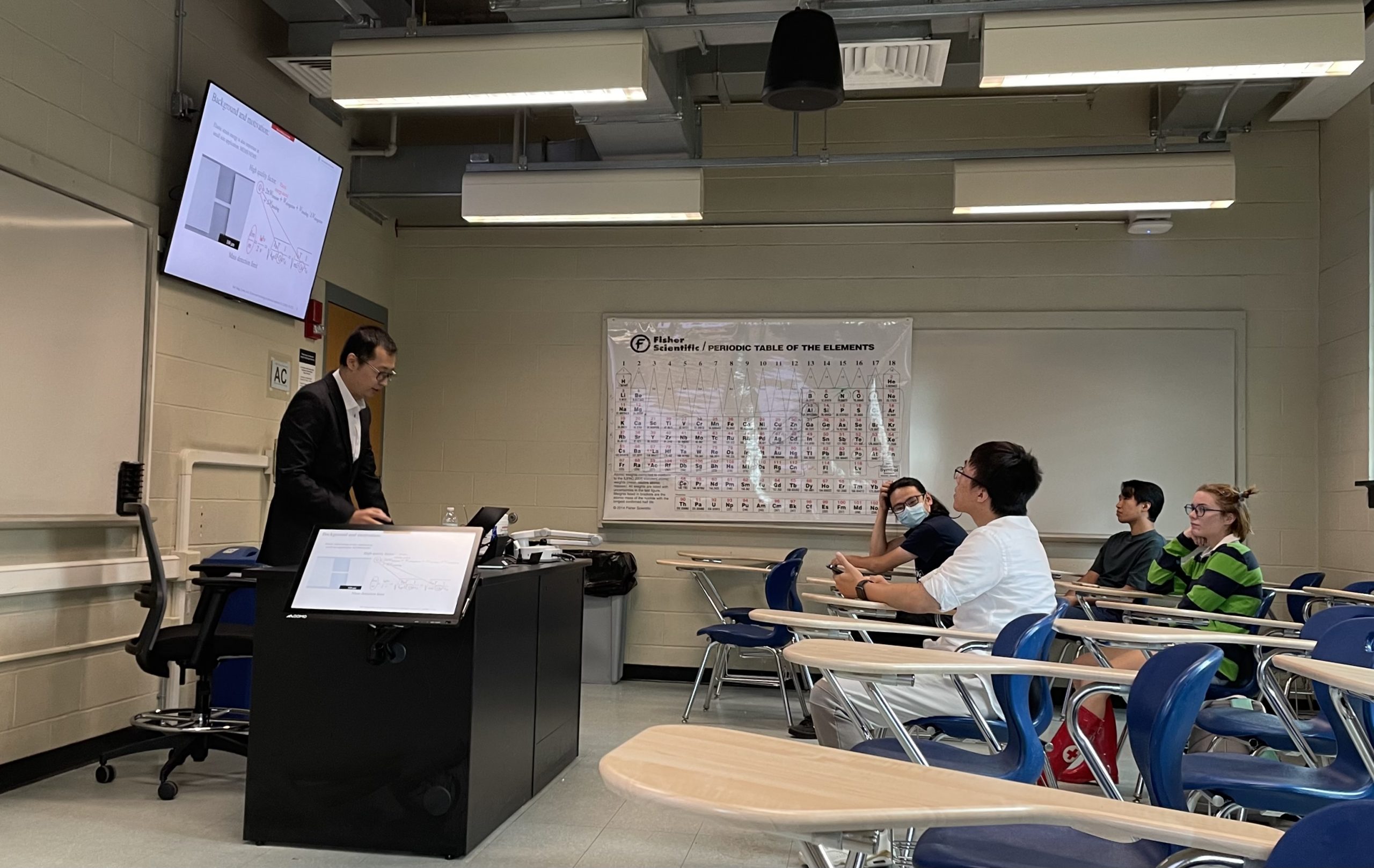Zhongyuan passed his PhD proposal defense! Many Congratulations!
Presentation title: In-situ mechanical characterization of hybrid organic-inorganic nanocomposites
Abstract: Engineering the modulus of resilience, the measure of a material’s ability to store and release elastic strain energy, is difficult because it requires asymmetrically increasing yield strength and Young’s modulus against their mutual scaling behavior. This task becomes further challenging if it needs to be carried out at the nanoscale such as for micro-/nano-electro-mechanical-systems (MEMS). Polymer based nanocomposite material is promising but it is difficult to introduce a large content filler without aggregation. To overcome these issues, we synthesized AlOx-reinforced SU-8 nanocomposite nanopillars by the vapor phase infiltration (VPI) method. According to the TEM analysis, the AlOx could infiltrate about 50 nm depth beneath the surface with uniform distribution and therefore, our nanocomposite stays as a core-shell structure. To analyze the mechanical performance of our nanocomposite, micropillar compression testing at different strain rates was implemented. Our preliminary results show that AlOx/SU-8 nanocomposite exhibit an ultra-high modulus of resilience (~15 MJ/m3) and the strain rate has weak effects on the resilience property of our composites. To quantitively understand the high performance of our nanocomposite, we utilize analytical modeling and molecular dynamics simulation method to explore the mechanism. The results show that the ultrahigh modulus of resilience originates from the low aspect ratio shape of amorphous aluminum oxide nano-particulates, the full occupation of these nano-particulates in the free volume of the infiltrated layer, and the extremely thin aluminum oxide link emanating from nano-particulates. The strain rate affects Young’s modulus more than the yield strength, which results from the relatively low cross-link degree of the SU-8 matrix, leading to a weak effect on the modulus of resilience.
Our experimental and numerical results demonstrate that vapor-phase infiltration is an excellent compositization method to produce a polymer nanocomposite that can absorb and release a significantly large amount of elastic strain energy. However, the infiltration depth of AlOx is only ~50 nm, which strongly limits the reinforcement efficiency. And our recent study shows that ZnOx fillers could fully infiltrate inside the SU-8 micropillar.
In this proposal, therefore, we propose to investigate the mechanical properties of ZnOx-reinforced and InOx-reinforced SU-8 nanocomposites and try to identify the infiltration mechanism of inorganic fillers to advance the VPI synthesis method. Since the rapid thermal annealing manufacturing process could crystallize the ZnOx fillers, we also plan to analyze whether filler crystallization could influence the modulus of resilience properties of the nanocomposite. Research outcomes will eventually allow us to develop high-performance polymer nanocomposites with the high modulus of resilience, which will be greatly useful to create high-power artificial muscles in robotics, soft electronics panels, and energy-efficient micro-/nano-electro-mechanical actuators.
